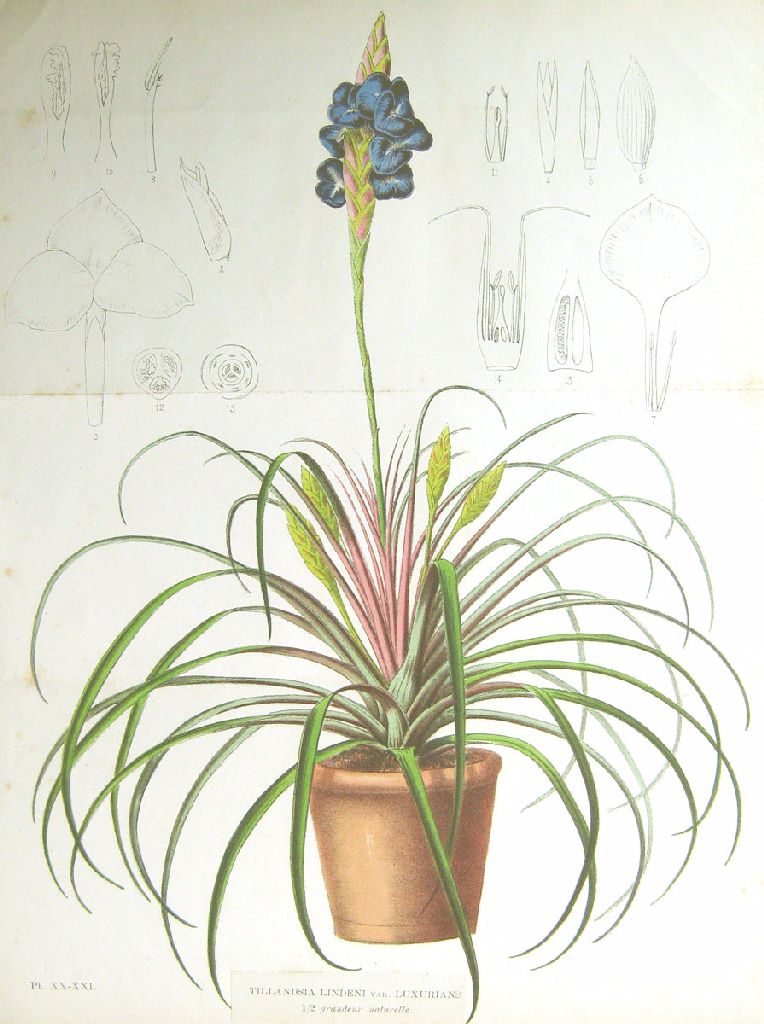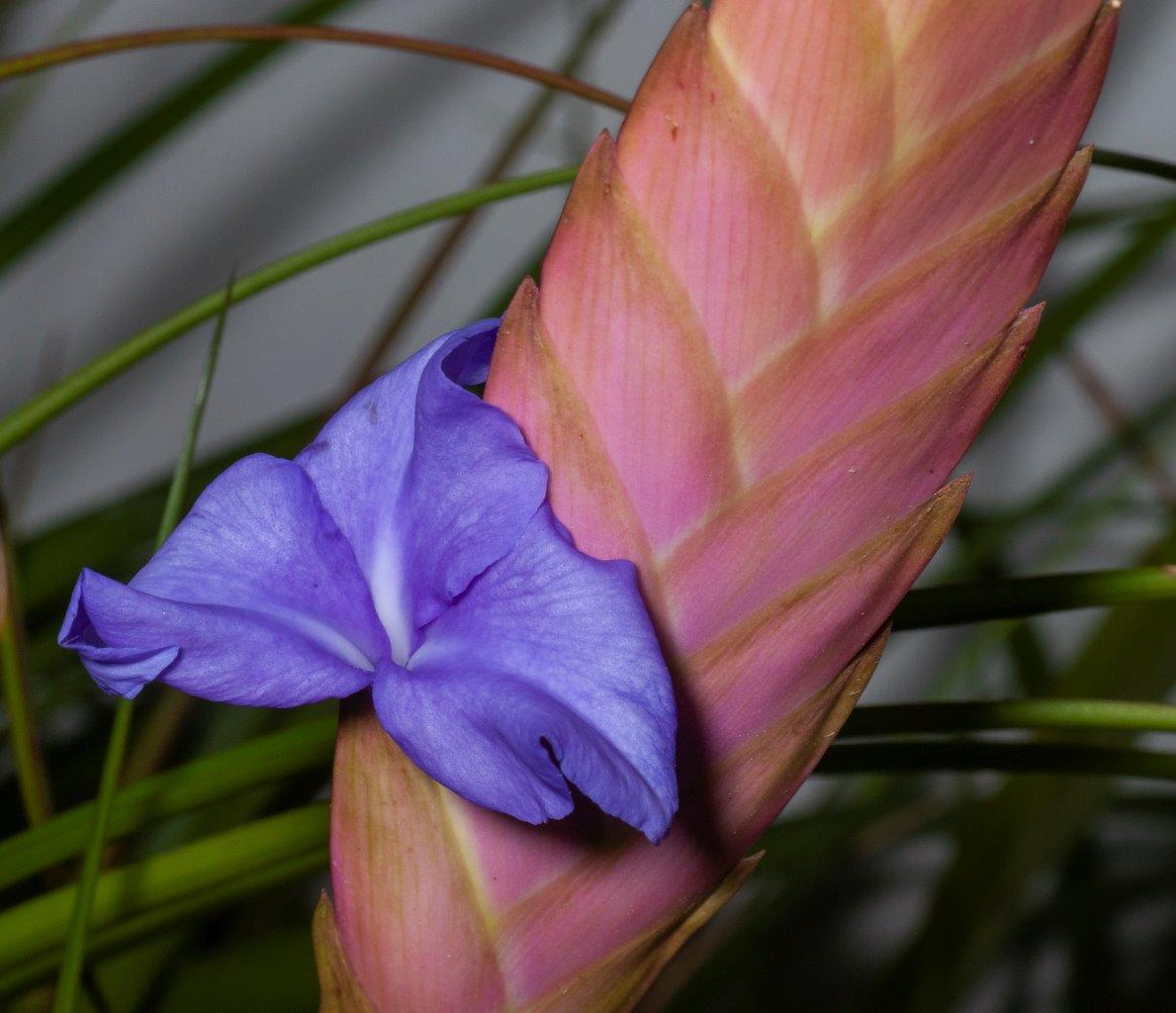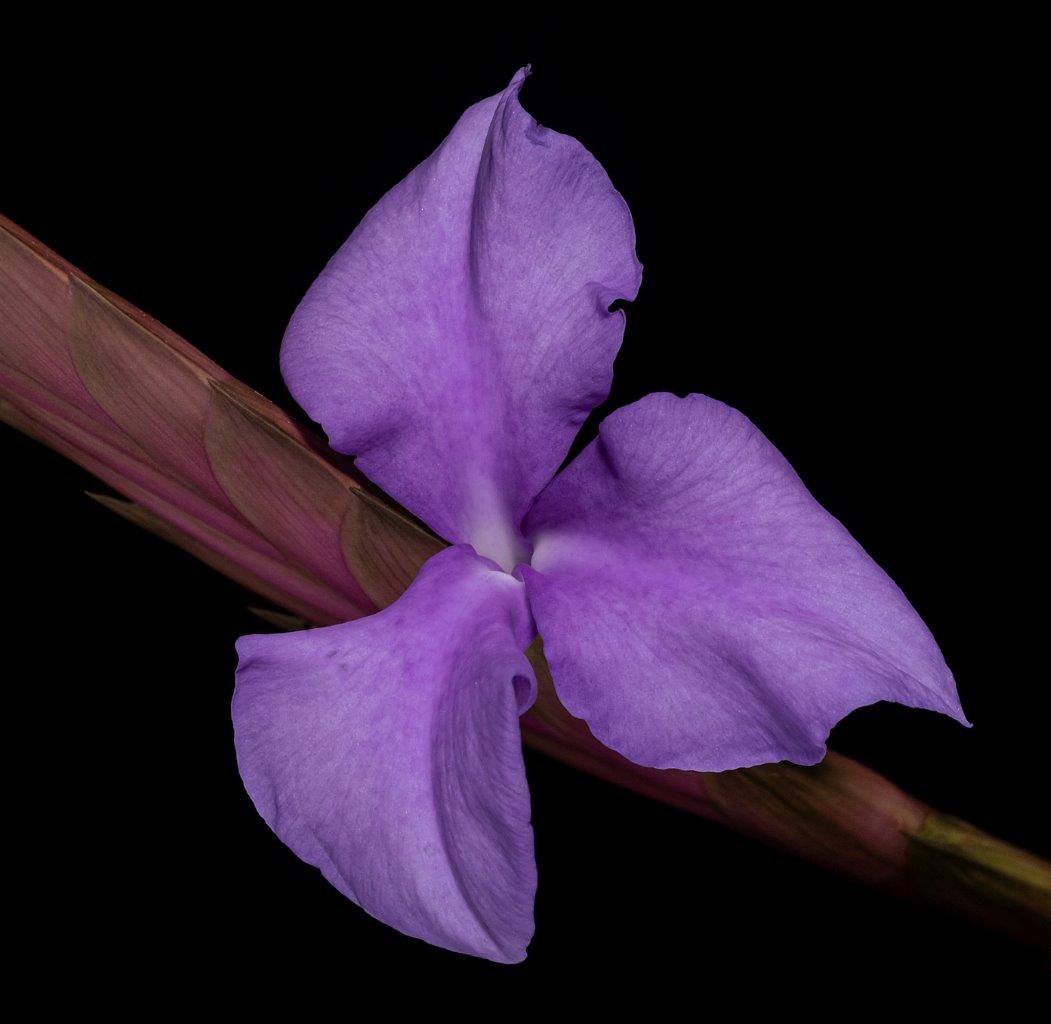Wallisia x duvalii
Was Tillandsia Duvalii
Click thumbnails for full size, scaled to a new window.
Wallisia x duvalii
Note: 'Duvalii' or x duvalii ?
Still on the BCR (Bromeliad Cultivar Registry) as T. 'Duvalii', a Hybrid of T. lindenii x T. cyanea.
Also on BSD (Bromeliad Species Database) as Wallisia duvalii x, a species name but the "x" indicating a Natural Hybrid.
Peter Tristram ... "I'd go with Wallisia x duvalii as per the "Taxon List". In the BSD it would be listed as per Derek's dvd. The resourse files are all there on the BSD. Graeme can expand on this I hope. It is also referenced as x duvalii in the Phytotaxa monograph 'Taxonomic revision of Bromeliaceae subfam. Tillandsioideae based on a multi-locus DNA sequence phylogeny and morphology' by MICHAEL H.J. BARFUSS1,*, WALTER TILL, ELTON M.C. LEME, JUAN P. PINZÓN, JOSÉ M. MANZANARES, HEIDEMARIE HALBRITTER, ROSABELLE SAMUEL & GREGORY K. BROWN"


| Wa. x duvalii as luxurians bq21-289 |
Wa. x duvalii as splendida rv54-12 |



| Wa. x duvalii ?? Rob Bower 02/21 |
Derek Butcher ... "Of all the new genera names we will have to get used to, I have been fascinated with Wallisia.
Wallis was a contemporary of Darwin and was also keen on natural selection!
Wallisia interested me because it had a hybrid coined under ICN rules even though it happened in captivity. I just had to write about it. I also include some paintings of the hybrid 'Duvalii'.



Wallisia or single paddles, by Derek Butcher Oct 2016.
You will eventually get used to this genus name which has been resurrected from 1870 in Phytotaxa 279(1): 001-097. 2016 AND covers the common species Tillandsia cyanea/lindenii which has given us so much strife over the years in deciding which is which. You will have to get used to the idea that lindenii is no longer with us!
You may recall that in 1951 Lyman Smith straightened out what was T. cyanea and what was T. lindenii. Basically, if it had no peduncle you thought T. cyanea and if it had a peduncle you thought T. lindenii. It was very complicated story in the late 1800’s with so many botanists wanting to get involved with an impressive plant in great demand in the horticultural world. It now seems that examination of the ‘old’ papers have revealed a different story which will eventually be part of the DVD under the species names. You may be pleased to know that Wallisia cyanea remains as the short peduncled plant but rare in cultivation because there are so many cultivar names on offer. It tends to be a fall back name for lost labels when you cannot decide what cultivar it is!
In my last epistle in May 2016 on this complex with ‘Pink Plume’ (See BCR) I wondered why I saw so many plants that were in between that I felt I could not call them T. lindenii. This latest Taxonomic revision has tackled this problem of hybridisation under the ICN rules rather than the ICNCP rules even though it occurred in culture and not in the wild. It would now seem that if you cannot link your plant to a Cultivar name then the name to use is the hybrid Wallisia ‘Duvalii’ These include plants whose spike has a substantial peduncle ( stalk). Most of these hybrids were done in Europe in the 1800’s so would have had to survive two world wars. There is a much better chance that the plants we grow today originated in European nurseries after 1945 but there is little or no record of any hybridising. The first reporting is in 1962 in America with ‘Caeca’ which we can only presume had a peduncle in line with ‘Duvalii’. However , primary investigations have not revealed this is being grown at this time, which shows how easily cultivars go out of fashion. If you have Tillandsia lindenii on your label it may be prudent to change it to Wallisia ‘Duvalii’
Now to the tricky bit. Although we have lost ‘lindenii’ we do have a new Wallisia lindeniana which is the new name for Tillandsia umbellata! Because there is no formal description for Wallisia lindeniana we use that of T. umbellata. If you do have provenance for wild collected Wallisia with a peduncle then W. lindeniana should be considered.
Other Wallisia to look for are W. anceps & W. pretiosa. W. pretiosa now includes what was called T. lindenii var tricolor or T. cyanea var tricolor. These too have paddle-like inflorescences.
Cultivars are as follows...
Anita
Caeca (considered a synonym in Phytotaxa 2016 but leave as is because it is a fairly recent hybrid)
Duvaliana (now considered synonymous with Duvalii in Phytotaxa 2016 so delete)
Duvalii
Emilie
Hans Gulz
Hybride H G
Josee
Paradise
Pink Plume
Roku
Sandy
Triflor
(Ed: See DD02/17: for all new (DNA resolved) species & Cultivars.)
Wallisia × duvalii (L. Duval) Barfuss & W. Till, comb. nov. {Wa. cyanea × Wa. lindeniana} Phytotaxa 279(1): 001-097. 2016
Basionym:
- Tillandsia × duvalii L. Duval (pro sp.) in Truff., J. Soc. Natl. Hort. France, ser. 3. 21: 492 (10 Jul 1899), as ‘Duvali’, Type:—Duval Hortus s.n. (holo ?Versailles) {T. lindenii var. major (female) × T. lindenii var. superba (male)}
Tillandsia lindenii var. duvalii (L. Duval) André, Rev. Hort. 71: 516 (16 Nov 1899), as ‘Duvali’
Tillandsia lindenii var. duvaliana L.B. Sm., Phytologia 20: 166 (1970), nom. nov. pro T. lindenii var. duvalii (L. Duval) André (16 Nov 1899), nom. illeg. {Art. 52.1}
Tillandsia lindenii var. × major (pro var.) Dombrain, Fl. Mag. (London) 10: pl. 529 (1871), Type:—Veitch Hortus s.n. (holo ?); Lectotype (designated by Smith & Downs, 1977: 845):—Plate 529 in Fl. Mag. (London) 10 (1871) {T. lindenii var. lindenii × T. lindenii var. regeliana}
Tillandsia lindenii var. intermedia E. Morren, Rev. Hort. 50: 390 (1878), nom. nov. pro T. lindenii var. major Dombrain (1871), nom. illeg. {Art. 52.1}
Phytarrhiza lindenii var. intermedia E. Morren, Belgique Hort. 29: 298 (1879), nom. nov. pro T. lindenii var. major Dombrain (1871), nom. illeg. {Art. 52.1}
Tillandsia lindenii var. luxurians E. Morren, Belgique Hort. 21: 289, pl. 20–21 (1871), Type:—Brussels Hortus s.n. (holo ?); Lectotype (designated by Smith & Downs, 1977: 845):—Plate 20–21 in Belgique Hort. 21 (1871)
Phytarrhiza lindenii var. luxurians (E. Morren) E. Morren, Belgique Hort. 29: 299 (1879)
Tillandsia lindenii var. abundans L.B. Sm., Phytologia 20: 166 (1970), nom. nov. pro T. lindenii var. luxurians E. Morren (1871), nom. illeg. {Art. 52.1}
Phytarrhiza lindenii var. koutsinskyana E. Morren, Belgique Hort. 30: 80 (1880), Type:—Warsaw Hortus s.n. (holo ?LG, ?WA)
Tillandsia lindenii var. koutsinskyana (E. Morren) L.B. Sm., Contr. U.S. Natl. Herb. 29: 494 (20 Jun 1951)
Tillandsia lindenii {var.} splendida Carrière, Rev. Hort. 54: 12, pl. (1882), Type:—Thibaut & Keteleer Hortus s.n. (holo ?); Lectotype (designated by Smith & Downs, 1977: 845):—Plate in Rev. Hort. 54 (1882)
Tillandsia lindenii var. caeca D. Barry, Bromeliad Soc. Bull. 12(1): 5 (1962), nom. inval. {Art. 40.1}
Tillandsia lindenii var. x caeca D. Barry in L.B. Sm. & Downs, Fl. Neotrop. 14(2): 846 (1977), Type:—Barry Hortus s.n. (holo US)
Note:—This hybrid is generally regarded as the ‘true’ Tillandsia lindenii mainly caused by a wrong interpretation of Smith (20 Jun 1951: 493; see also the notes under Wallisia lindeniana and Wa. cyanea).
Updated 18/04/22







